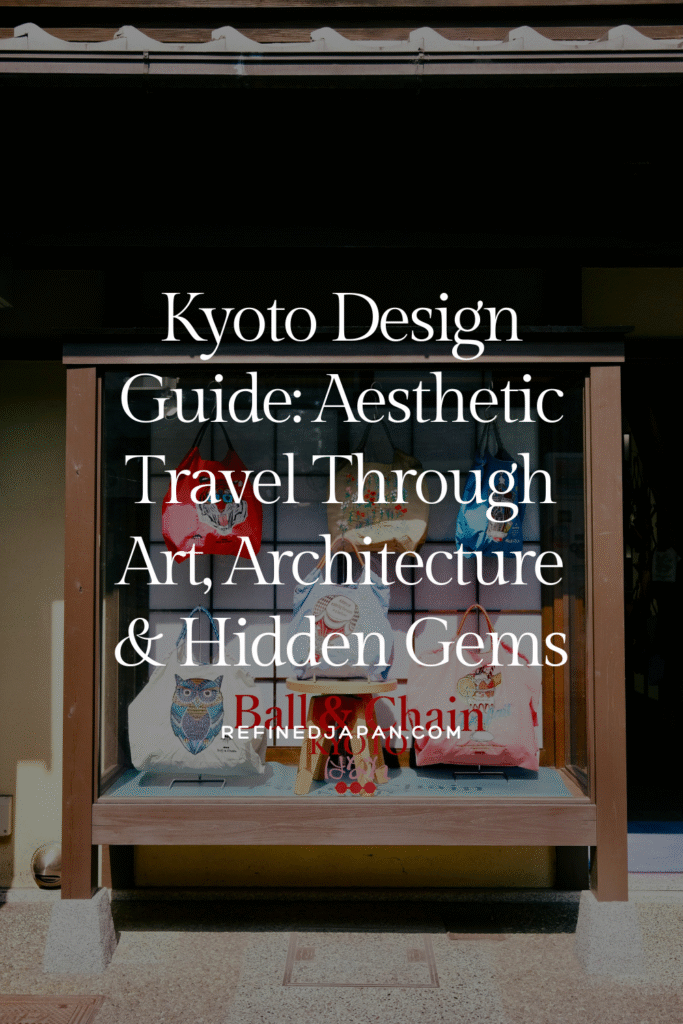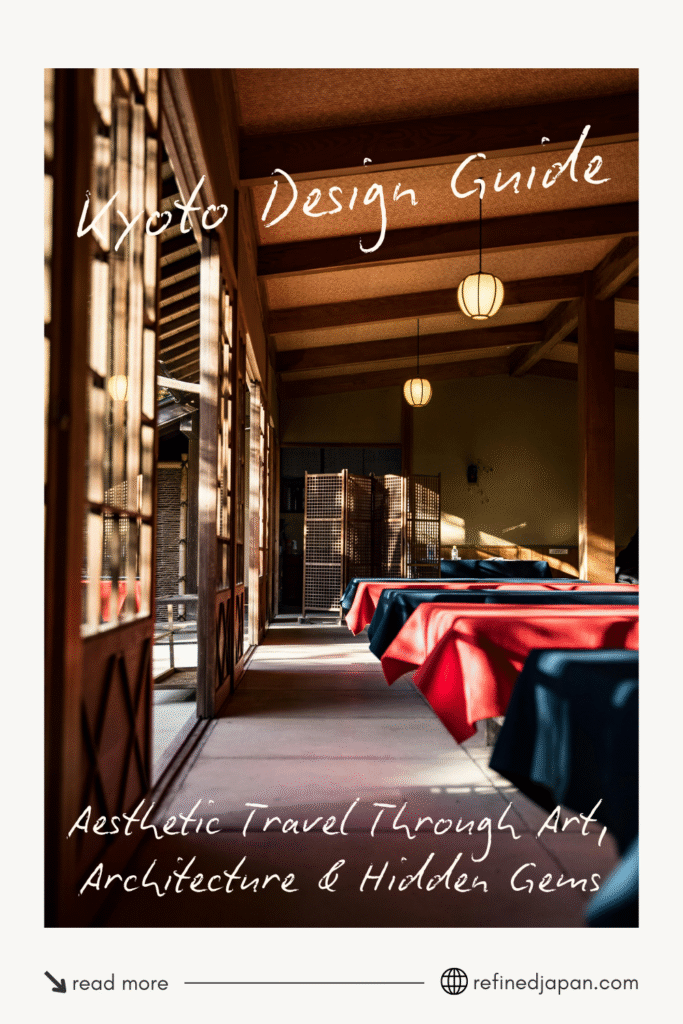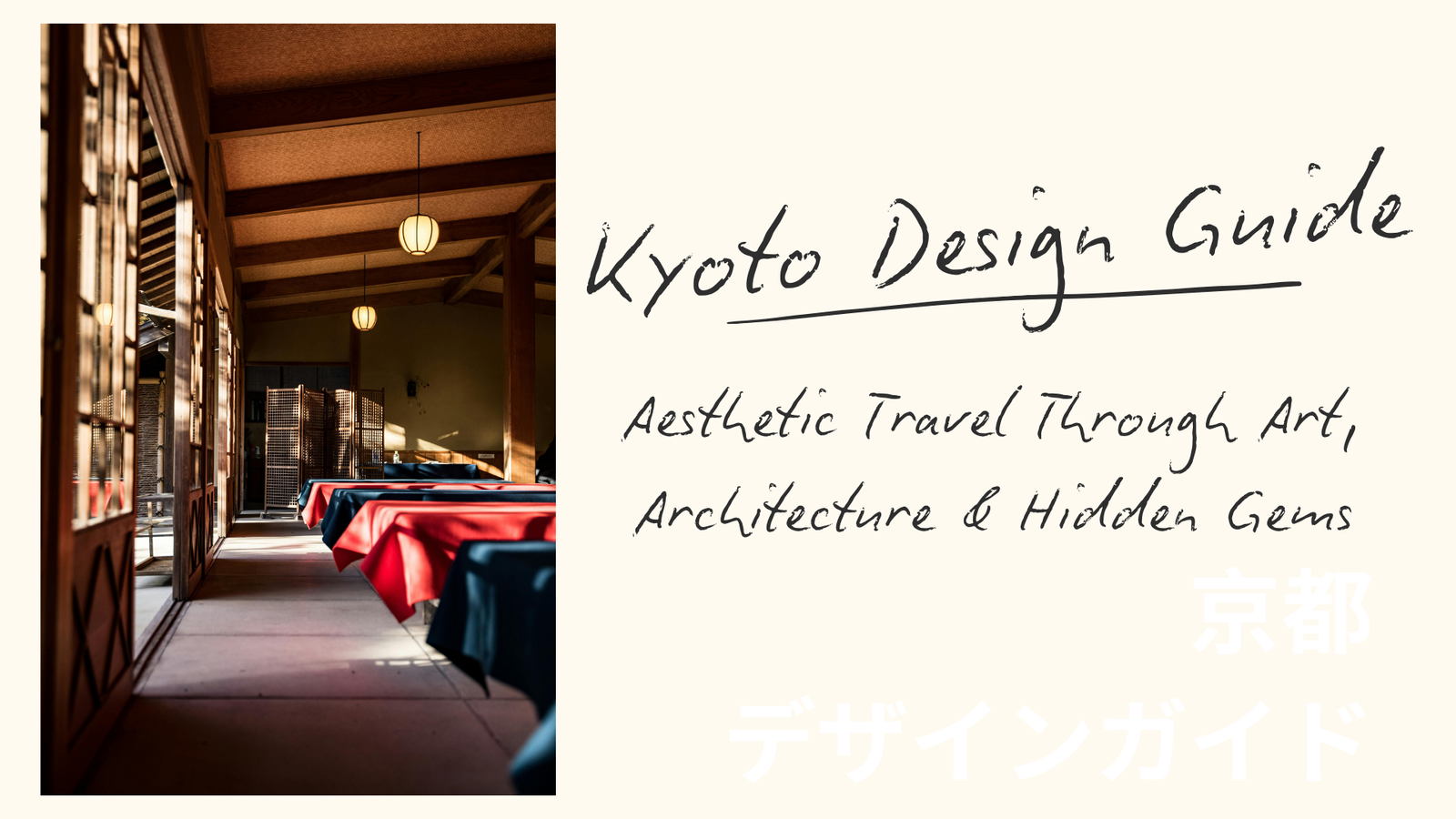Table of Contents
Tired of the typical Kyoto travel guides? Looking for a travel experience that blends timeless tradition with design-forward beauty?
This Kyoto Design Guide takes you through the city’s most stunning neighbourhoods, from historic machiya townhouses to contemporary museums and artistic cafés. Whether you’re an architect, artist, or lover of aesthetic culture, Kyoto offers a sensory-rich journey unlike anywhere else in Japan.
How to Get to Kyoto from Tokyo or Osaka
Kyoto has no international airport of its own, so your entry point will likely be Tokyo or Osaka. From there, it’s a seamless transition to the cultural heart of Japan.
🚅 From Tokyo
- Shinkansen (Bullet Train): Take the Tokaido Shinkansen from Tokyo Station to Kyoto Station. The Nozomi train takes approximately 2 hours and 15 minutes, while the Hikari takes around 2 hours and 40 minutes.
- Flight: Fly from Haneda or Narita Airport to Osaka Itami Airport, then take a limousine bus or train to Kyoto. Total travel time is about 3.5 hours.
- Overnight Bus: An economical option, with travel times ranging from 7 to 9 hours. Buses are equipped with reclining seats and onboard restrooms.
✈️ From Osaka
- Haruka Express Train: From Kansai International Airport (KIX) to Kyoto Station in approximately 75 minutes.
- Limousine Bus: Direct service from KIX to Kyoto Station, taking about 90 minutes.
How to Get Around Kyoto
Whether you’re wandering historic neighbourhoods or discovering design-forward spaces, Kyoto is remarkably navigable.
🚲 By Bicycle
Flat streets and a grid layout make Kyoto ideal for cycling.
- Rental services: PIPPA, Kyoto Eco Trip
- Many attractions are accessible via bike, and the slower pace enhances your experience.
🚌 By Bus
Best for reaching temples and historic districts.
- Easy-to-understand color-coded maps
- Kyoto City Bus & Subway Pass offers unlimited rides
- Tip: Avoid peak times to skip the crowds
🚇 By Subway
Two lines—Karasuma (N–S) and Tozai (E–W)—connect the city efficiently.
- Use an IC card (ICOCA, Suica, PASMO) for seamless travel
- Ideal for moving quickly between central neighborhoods
🚖 Other Options
- JR lines and private railways connect to Uji, Arashiyama, and Nara
- Taxis are convenient but pricy—best for groups or late-night travel
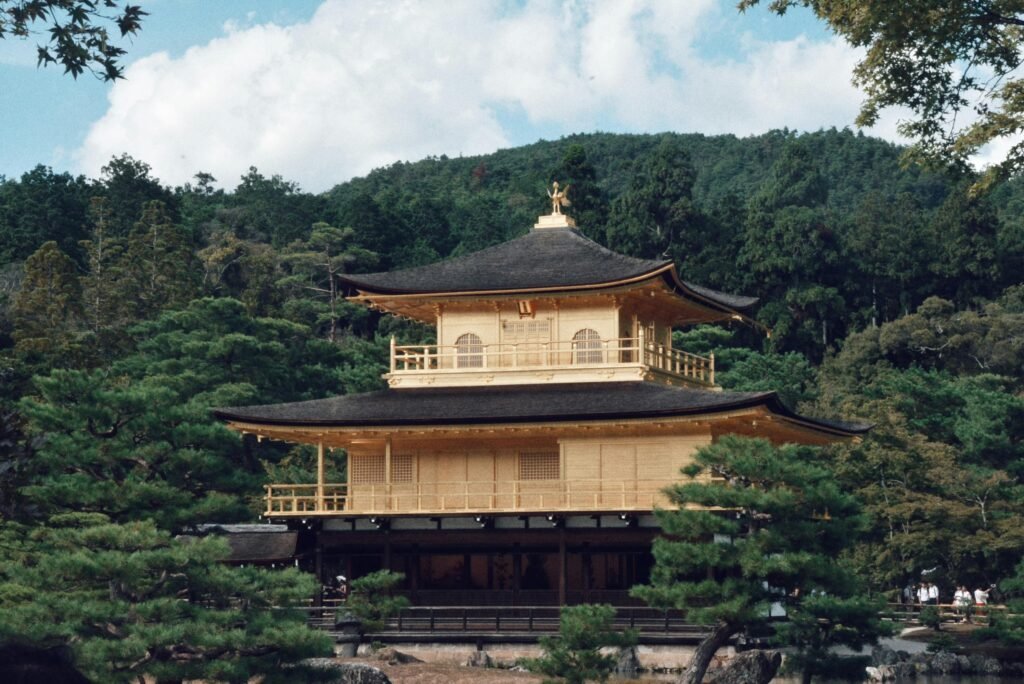
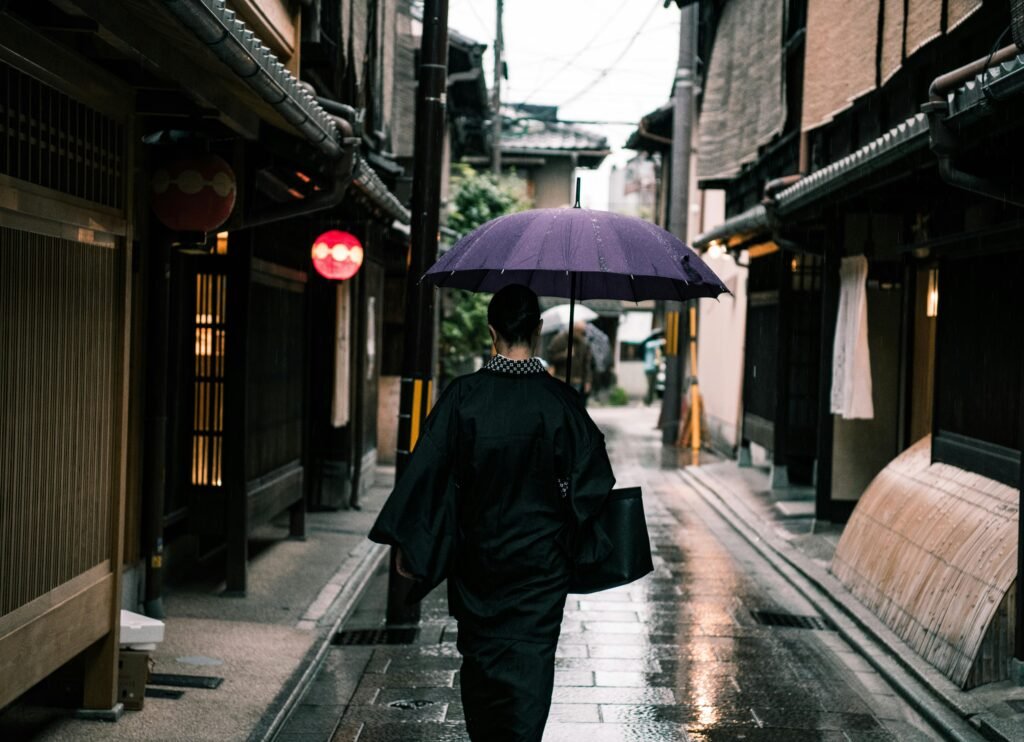
5 Most Aesthetic Areas in Kyoto for Design Lovers
1. Gion
This historic district exemplifies the concept of “borrowed scenery” in Japanese design. Here, traditional machiya (townhouses) line narrow stone-paved streets, their wooden facades weathered to a perfect patina. Visit at dusk when paper lanterns cast their warm glow on the preserved architecture.
Design Tip: Look for the subtle contemporary elements integrated into historical structures—modern glass panels behind traditional wooden lattices, and minimalist signage that complements centuries-old calligraphy.
2. Higashiyama
Just east of Gion, Higashiyama blends nature, history, and spiritual design. Winding lanes connect iconic sites like Kiyomizu-dera and Kodai-ji, while hidden teahouses and artisan shops offer quiet escapes. The district’s hillside setting creates a natural sense of elevation and perspective.
Design Tip: Notice how the terrain influences architecture—buildings staggered along slopes, framed views of Kyoto’s cityscape, and garden paths designed to slow your pace and elevate your senses.
3. Arashiyama
Set against forested mountains and the Hozugawa River, Arashiyama is a study in serenity. From the famous bamboo grove to riverside temples, this area offers a peaceful counterpoint to central Kyoto. Cultural spots like the Fukuda Art Museum add a modern aesthetic dimension.
Design Tip: Explore how natural materials—bamboo, stone, wood—are used in both traditional and contemporary ways. Watch how light and shadow play across textures throughout the day.
4. Nakagyo
In the heart of Kyoto, Nakagyo is where old meets avant-garde. Former merchant quarters now house concept cafés, craft boutiques, and sleek galleries. It’s a place where local creatives reinterpret tradition through a modern lens.
Design Tip: Look for playful contrasts—tatami floors paired with Scandinavian chairs, or hand-dyed fabrics displayed in concrete interiors. This district thrives on reinvention.
5. Okazaki
Kyoto’s cultural corridor, Okazaki is home to some of the city’s finest museums and design institutions. Wide boulevards lined with trees give the area a Parisian feel, while iconic landmarks like Heian Shrine root it firmly in Japanese heritage.
Design Tip: Spend time in the museum cafés and gift shops—these often showcase emerging design talent and Kyoto-made goods that balance elegance with utility.
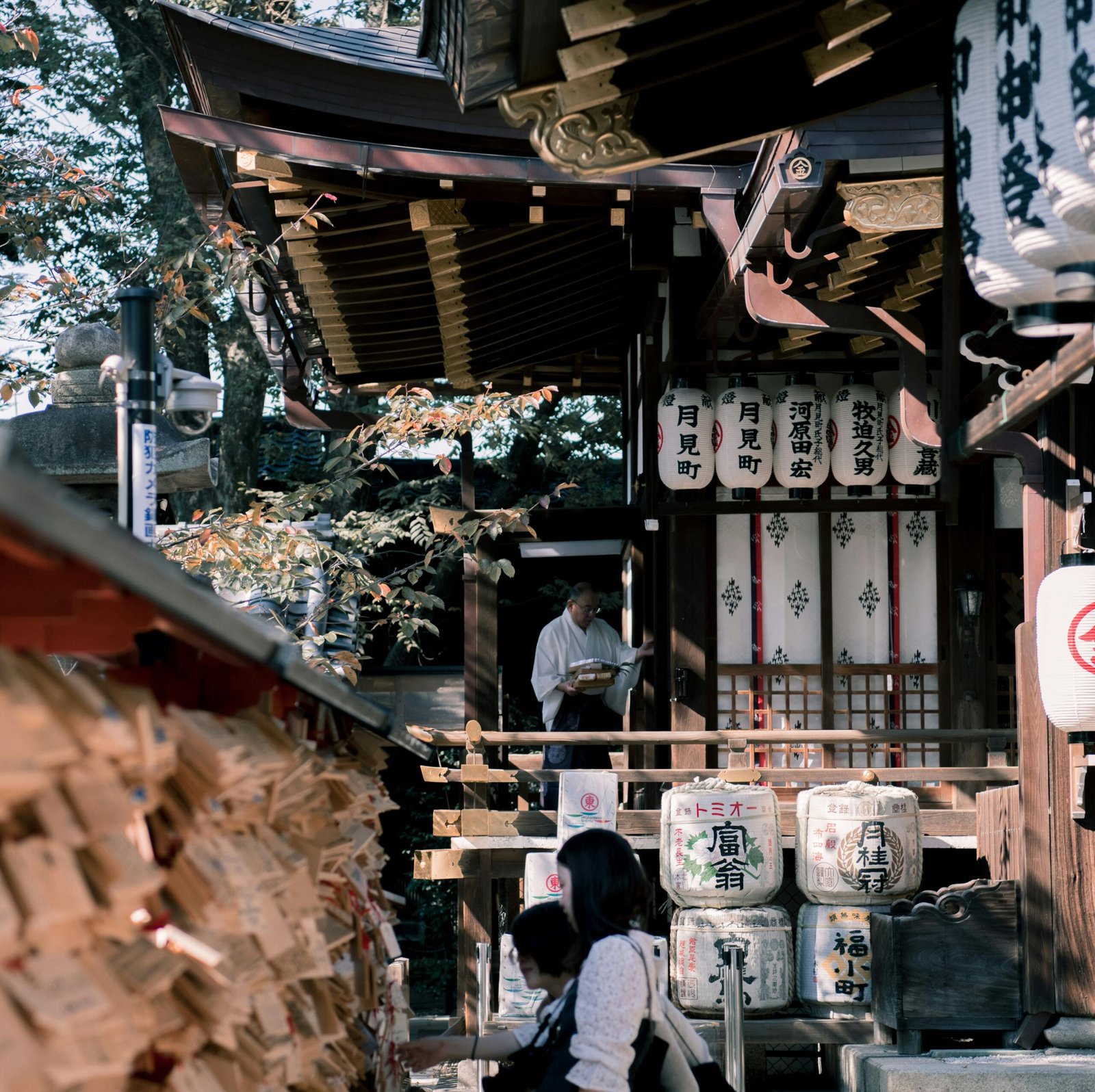
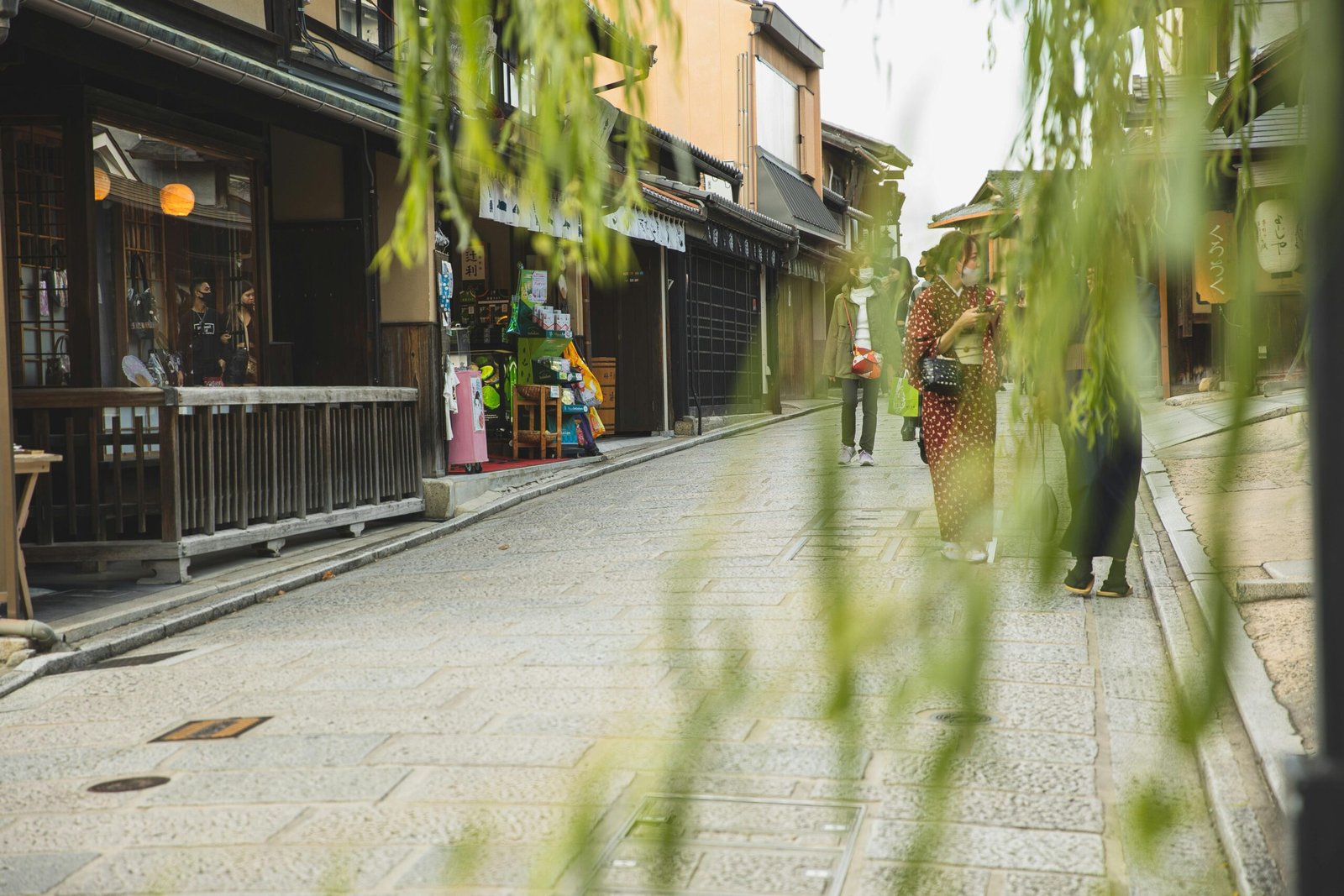
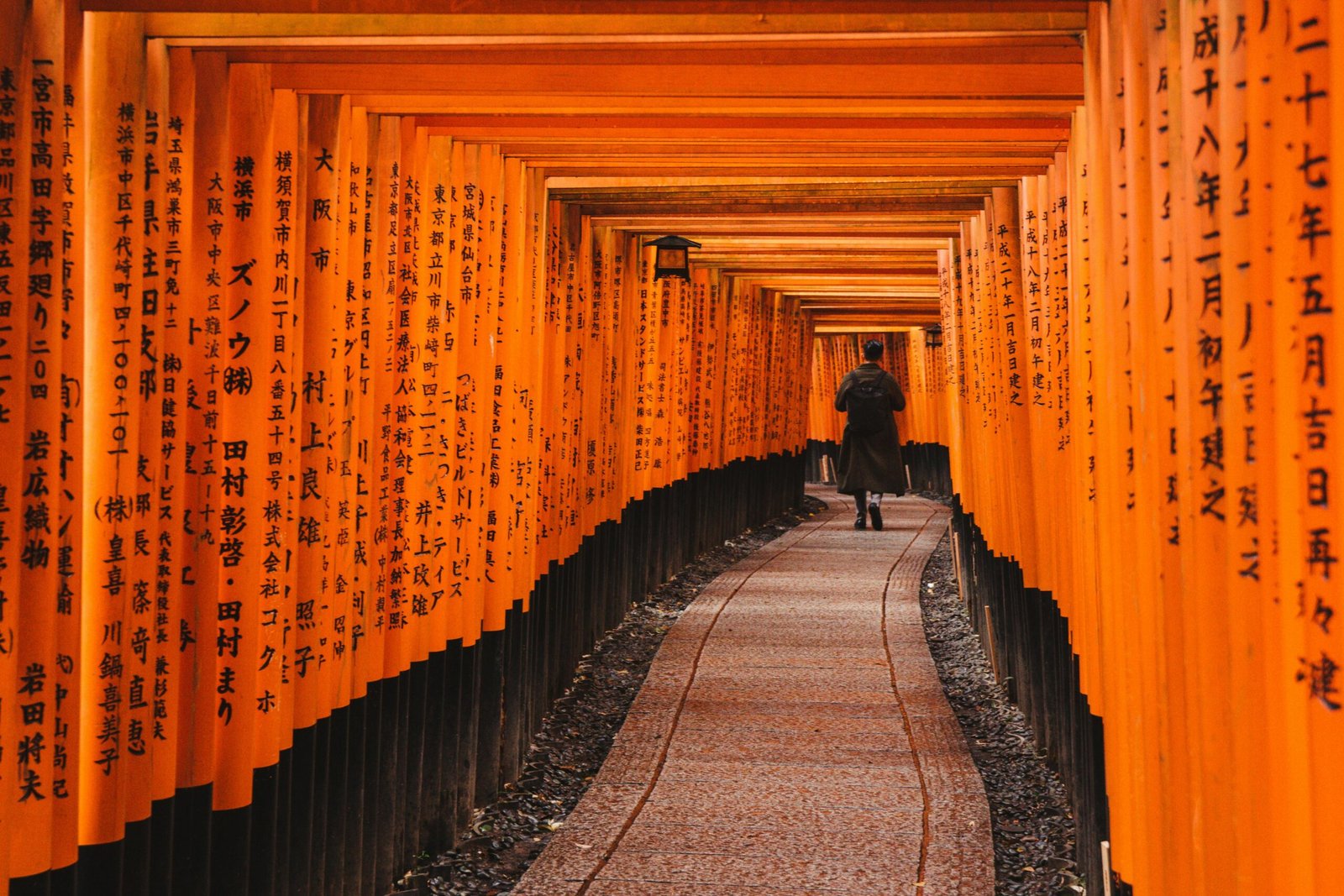
Top 7 Art and Design Spots in Kyoto You Shouldn’t Miss
1. The National Museum of Modern Art, Kyoto
Showcasing modern Japanese art, including paintings, sculptures, and crafts. The museum’s architecture complements its contemporary collections.
📍26-1 Okazaki Enshojicho, Sakyo Ward, Kyoto
[🔗Visit website]
2. Kyoto Museum of Crafts and Design
An interactive space highlighting Kyoto’s traditional crafts like textiles, ceramics, and lacquerware. Visitors can observe artisans at work.
📍B1F Kyoto City Kangyo-kan (Miyako Messe), 9-1 Okazaki Seishoji-cho, Sakyo Ward, Kyoto
[🔗Visit website]
3. Fukuda Art Museum
Located in Arashiyama, this museum houses over 1,800 works, focusing on Japanese-style paintings from the Edo period to the modern era. The building offers scenic views of the Oi River and Togetsukyo Bridge.
📍3-16 Sagatenryuji Susukinobabacho, Ukyo Ward, Kyoto
[🔗Visit website]
3. Haku Kyoto
A contemporary space in Sanjo that integrates art, design, and hospitality, offering exhibitions and events in a minimalist setting.
📍566 Nakanocho, Shiomogyo Ward, Kyoto
[🔗Visit website]
4. T.T (Gion)
A stylish venue in Gion combining a gallery, café, and boutique, showcasing local artists and designers in a refined atmosphere.
📍570-120 Gionmachi Minamigawa, Higashiyama Ward, Kyoto
[🔗Reference]
5. Shigemori Mirei Garden Museum
Dedicated to the renowned garden designer Mirei Shigemori, this museum features his innovative garden designs that blend tradition with modernity.
📍34 Yoshidakamiojicho, Sakyo Ward, Kyoto
6. Raku Museum
A small museum offering insights into the Raku family’s ceramic artistry, emphasising the wabi-sabi aesthetic in tea ceremony wares.
📍87-1 Aburahashizumecho, Kamigyo Ward, Kyoto
[🔗Visit website]
Best Design Hotels in Kyoto for a Stylish Stay
1. Node Hotel
An art-centric hotel featuring contemporary artworks throughout its interiors, offering guests an immersive creative experience.
📍461 Toroyamacho, Nakagyo Ward, Kyoto
[🔗Visit website]
2. Hotel Kanra Kyoto
Housed in a renovated school building, this hotel blends traditional Kyoto aesthetics with modern design elements, providing spacious rooms adorned with local crafts.
📍190 Kitamachi, Shimogyo Ward, Kyoto
[🔗Visit website]
3. Ace Hotel Kyoto
Kengo Kuma’s masterful fusion of modernist design and traditional craftsmanship.
📍245-2 Kurumayacho, Nakagyo Ward, Kyoto
[🔗Visit website]
When Kyoto Celebrates Art: Must-See Art & Design Events
1. Artist’s Fair Kyoto (February-March)
A contemporary art fair showcasing emerging and mid-career Japanese artists in unique architectural venues—including historic buildings and modern industrial spaces.
[🔗Visit website]
2. KYOTOGRAPHIE (April–May)
An international photography festival featuring exhibitions in historical buildings and modern spaces across Kyoto.
[🔗Visit website]
3. Design Week Kyoto (August)
An event that opens up creative studios and workshops to the public, fostering interaction between designers and visitors.
[🔗Visit website]
4. Art Collaboration Kyoto (November)
An innovative art fair where Japanese galleries collaborate with international partners, presenting cutting-edge contemporary works in a distinctly Kyoto setting.
[🔗Visit website]
5. Kyoto Modern Architecture Festival (November)
A celebration of Kyoto’s architectural heritage, offering tours and lectures on modernist buildings.
[🔗Visit website]
Summary: Where Tradition Meets Contemporary Curiosity
Kyoto is more than its iconic shrines—it’s a living canvas of timeless design, where every stone path and shadowed alley tells a story. Whether you’re chasing aesthetic inspiration or cultural depth, this city rewards those who look beyond the obvious.
FAQs
Q: Is Kyoto walkable?
A: Absolutely. Many neighbourhoods are best enjoyed on foot or by bike.
Q: Should I get the JR Pass?
A: If you’re travelling beyond Kyoto, yes—especially for Shinkansen Hikari and day trips.
Q: When is the best time to visit Kyoto?
A: Spring and autumn. These seasons highlight Kyoto’s natural palette, enhancing the beauty of architectural contrasts. Summers can be extremely hot and humid, while winters are often quite cold—making the milder seasons especially appealing.
Bookmark this curated guide on Pinterest
